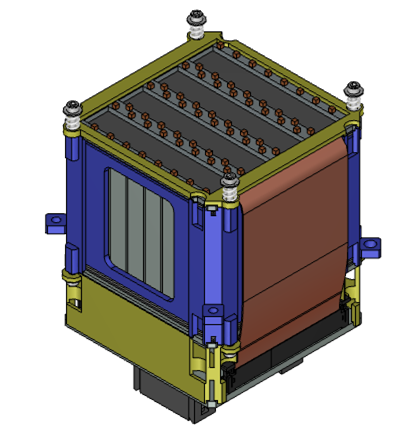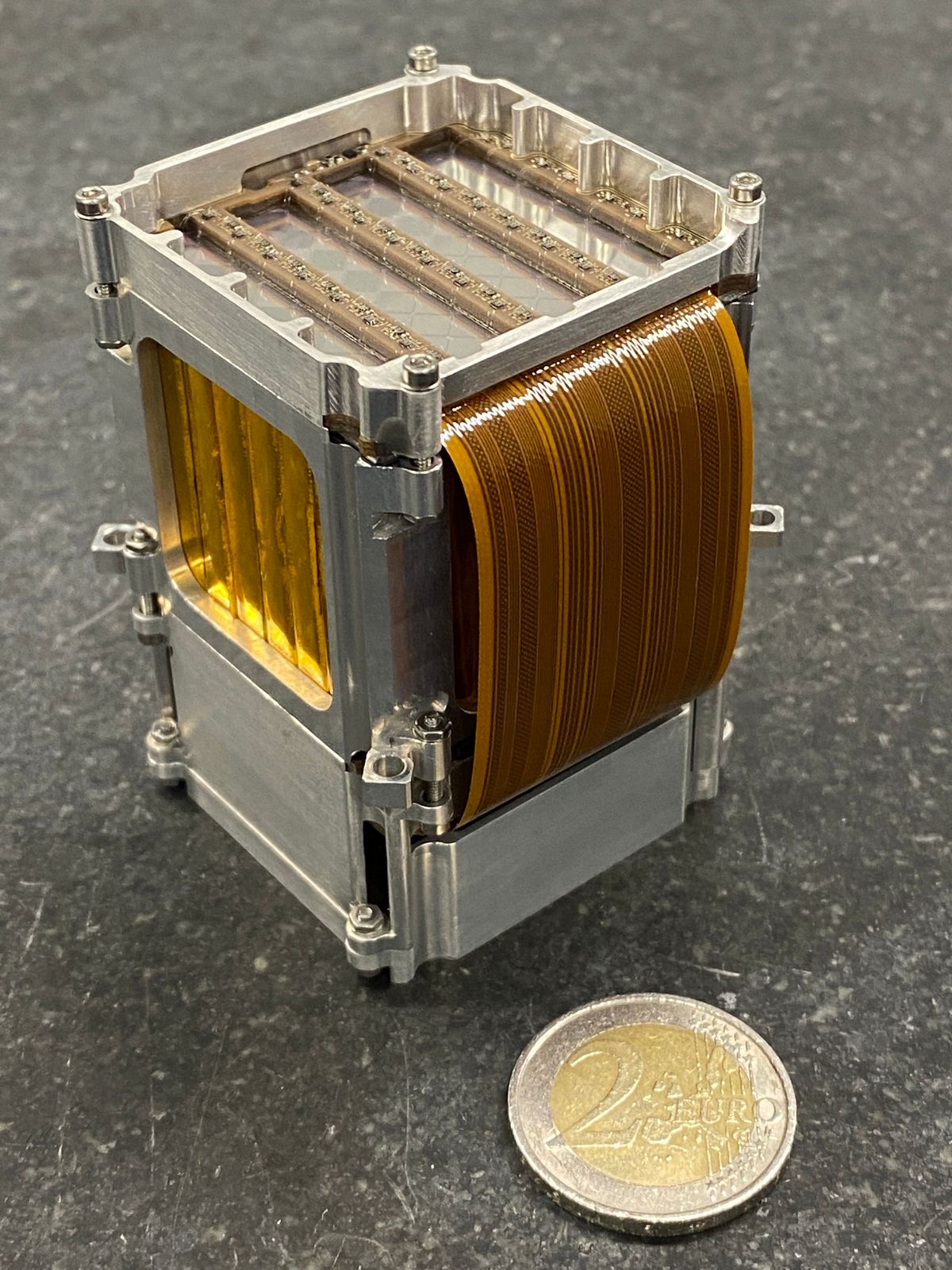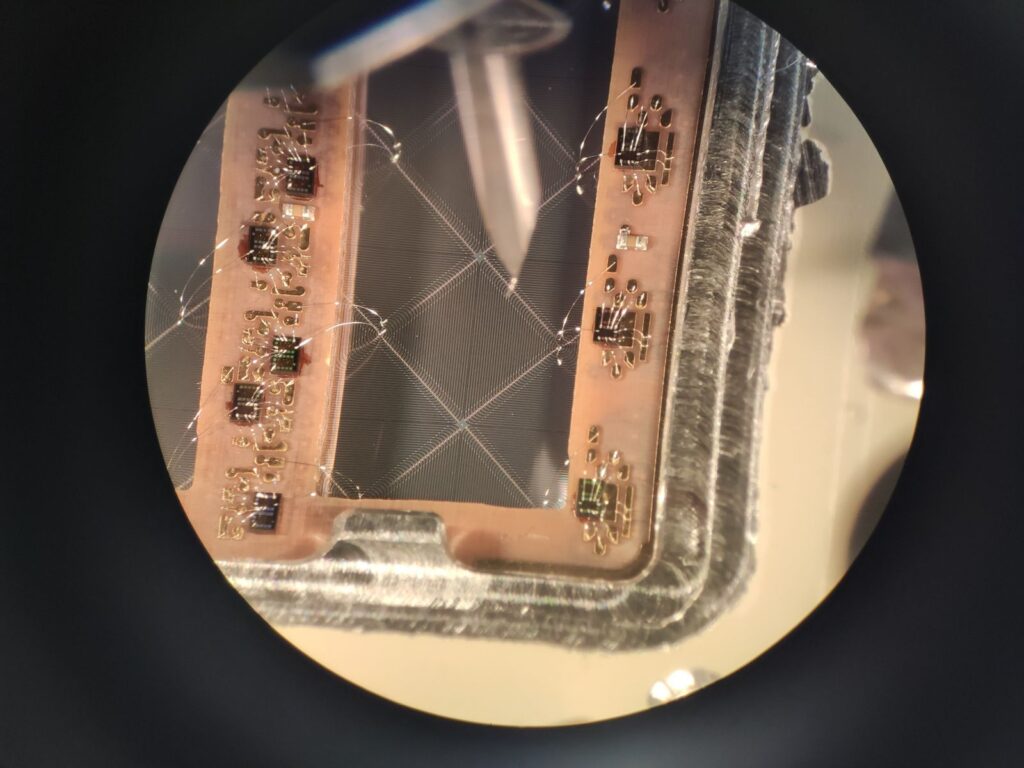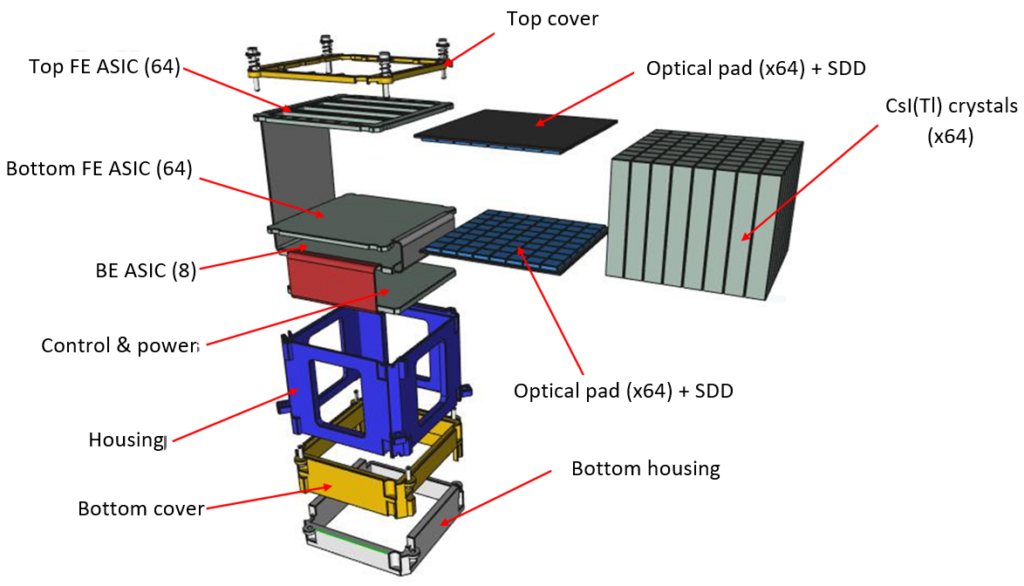THESEUS (Transient High Energy Sky and Early Universe Surveyor) is a mission specifically designed to investigate the Early Universe, including the cosmic dawn and reionization era, while also making significant contributions to multi-messenger and time domain astrophysics.
One of the instrumental components aboard the mission is the X and Gamma Imaging Spectrometer (XGIS), a partially-imaging spectroscopic instrument. The XGIS utilizes an innovative technology that combines Silicon Drift Detectors (SDD) with crystal scintillator bars and a very low-noise distributed front-end electronics. Recently, a proof-of-concept cell with 64 detectors was developed and integrated, and I was responsible for overseeing the assembly of the detectors and front-end PCB.

The integration process took place within a highly controlled environment, specifically a clean room, and involved several key activities, including:
- Preparing and evaluating the sensors
- Designing and fabricating auxiliary mechanics required for the integration process
- Installing the sensors
- Assembling the front-end PCB and installing components
- Performing ultrasonic bonding of the sensors and preamplifiers on the FE-PCB
For further in-depth information regarding the THESEUS mission and the spectrometer module, additional details can be found in published sources (https://doi.org/10.48550/arXiv.2102.08701) or on official website of the mission (https://www.isdc.unige.ch/theseus/)



